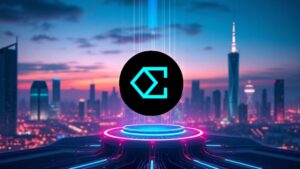Wearable technology continues to evolve rapidly in 2025, with development kits providing the essential building blocks for creators, makers, and professional developers. These platforms integrate sensors, processors, and connectivity options in compact, power-efficient packages designed specifically for body-worn applications. This article examines the leading wearable development platforms, with a focus on Arduino and Adafruit offerings, their capabilities, applications, and getting started resources.
#1
Circuit Playground Express: The All-In-One Wearable Platform
The Adafruit Circuit Playground Express represents one of the most versatile and accessible wearable development platforms available today. This round, sensor-packed board builds upon the original Circuit Playground Classic with enhanced features and simplified programming options.
#2
The board comes with built-in USB connectivity, removing the need for special cables or adapters during programming sessions. Power options are flexible, supporting USB, "AAA" battery packs, or LiPoly batteries, making it adaptable to various wearable form factors with different power requirements.
Core Features and Specifications
The Circuit Playground Express is powered by an ultralow-power SMART SAM L21 Microcontroller featuring a 32-bit ARM® Cortex®-M0+ core, specifically engineered for power efficiency in wearable applications. Its thoughtful design includes alligator-clip pads around the edge, eliminating the need for soldering when connecting to various components or materials. This makes it particularly suitable for textile integration and rapid prototyping of wearable concepts.The board comes with built-in USB connectivity, removing the need for special cables or adapters during programming sessions. Power options are flexible, supporting USB, "AAA" battery packs, or LiPoly batteries, making it adaptable to various wearable form factors with different power requirements.
#3
Additional built-in capabilities include NeoPixel LEDs for visual feedback, a motion detector for gesture recognition or orientation sensing, and IR send/receive functionality that allows multiple Circuit Playground devices to communicate with each other—particularly useful for creating social wearables that interact with proximity.
Sensors and Interactive Elements
What truly distinguishes the Circuit Playground Express as a wearable development platform is its rich array of built-in sensors and interactive elements. The board features seven capacitive touchpads that can be programmed to respond to direct touch or connected to conductive materials like copper tape, tools, fruit, or even liquids via alligator clips or jumpers. This enables creative interaction designs for wearable applications.Additional built-in capabilities include NeoPixel LEDs for visual feedback, a motion detector for gesture recognition or orientation sensing, and IR send/receive functionality that allows multiple Circuit Playground devices to communicate with each other—particularly useful for creating social wearables that interact with proximity.
#4
For those preferring text-based programming, the board also supports CircuitPython, as demonstrated in the capacitive touch keyboard project example where the board's touchpads are programmed to play different musical notes when touched.
Programming Environment
The Circuit Playground Express supports multiple programming approaches, making it accessible to developers with varying levels of expertise. It currently works with Microsoft MakeCode, a web-based code editor that offers both a visual block-based interface for beginners and a JavaScript editor for more advanced users. This allows creators to build programs that create custom animations, generate sounds, and respond to sensor events like "On Shake" to react to external stimuli.For those preferring text-based programming, the board also supports CircuitPython, as demonstrated in the capacitive touch keyboard project example where the board's touchpads are programmed to play different musical notes when touched.
#5
Arduino Wearable Solutions
Arduino provides a complementary ecosystem of components and boards optimized for wearable development, with offerings that focus on miniaturization, sensor integration, and connectivity.
#6
Arduino Nano 33 BLE Sense Rev2
The Arduino Nano 33 BLE Sense Rev2 represents Arduino's compact 3.3V AI-enabled board in a minimalist form factor. It includes an integrated sensor array that allows developers to begin programming immediately without requiring external hardware. This makes it particularly suitable for wearable applications where space constraints and power efficiency are crucial considerations.
#7
Nicla Sense ME
For ultra-compact wearable designs, the Nicla Sense ME offers a tiny, low-power solution that establishes a new benchmark for intelligent sensing applications. It combines integration simplicity with the scalability advantages of the Arduino ecosystem, making it appropriate for sophisticated wearable projects that require minimal footprint.
#8
• Grove OLED Display 0.96" for visual feedback in wearable applications
• Proto Shield Rev3 for custom circuit design and testing
• Connectivity solutions like the Arduino USB Type-C® Cable with 2-in-1 design (USB-C to USB-C with USB-A adapter)
These components complement the core platforms, enabling more sophisticated wearable designs with visual feedback and custom circuitry.
Supporting Components
Arduino's wearable ecosystem extends beyond core processor boards to include essential supporting components:• Grove OLED Display 0.96" for visual feedback in wearable applications
• Proto Shield Rev3 for custom circuit design and testing
• Connectivity solutions like the Arduino USB Type-C® Cable with 2-in-1 design (USB-C to USB-C with USB-A adapter)
These components complement the core platforms, enabling more sophisticated wearable designs with visual feedback and custom circuitry.
#9
Advanced Wearable Development Platforms
Beyond the maker-focused options from Adafruit and Arduino, more specialized wearable development kits address specific application domains.
#10
Users wearing this device can control digital systems without physical interaction—pausing and playing media content, writing and sending text messages—all through the power of thought. This technology points to the future direction of wearable interfaces, where direct neural control may eventually replace physical and voice interactions.
NextMind Dev Kit
The NextMind Dev Kit represents a breakthrough in brain-computer interface technology for wearables. This brain-sensing wearable recognizes images presented to the visual cortex and decodes this information to send commands to connected computers in real-time.Users wearing this device can control digital systems without physical interaction—pausing and playing media content, writing and sending text messages—all through the power of thought. This technology points to the future direction of wearable interfaces, where direct neural control may eventually replace physical and voice interactions.
#11
Project Ideas and Applications
The versatility of these wearable development platforms enables a wide range of creative and practical applications.
#12
• Converting sensor readings to visual feedback using NeoPixels, such as displaying temperature readings as a specific number of illuminated LEDs
• Creating threshold-based alarm systems that respond to environmental conditions like sound levels, temperature extremes, or excessive acceleration
• Developing timing-based games where lights move in patterns and users must press buttons at precise moments
• Building interactive timekeeping devices where different colored lights represent hours, minutes, and seconds
Educational Projects
For learning environments, several structured project ideas have proven effective:• Converting sensor readings to visual feedback using NeoPixels, such as displaying temperature readings as a specific number of illuminated LEDs
• Creating threshold-based alarm systems that respond to environmental conditions like sound levels, temperature extremes, or excessive acceleration
• Developing timing-based games where lights move in patterns and users must press buttons at precise moments
• Building interactive timekeeping devices where different colored lights represent hours, minutes, and seconds
#13
• Wearables that communicate with each other via IR, with LEDs that increase in brightness as devices come closer together, creating interactive social experiences
• Capacitive touch keyboards that transform conductive materials into musical interfaces, allowing wearers to create sounds through touch
• Light-up fashion items like the discontinued but inspirational "Twinkling Tutu" and "Watch Me Sparkle" tote bag kits that once featured in Adafruit's catalog
Interactive Wearables
More advanced projects explore the social and interactive potential of wearable technology:• Wearables that communicate with each other via IR, with LEDs that increase in brightness as devices come closer together, creating interactive social experiences
• Capacitive touch keyboards that transform conductive materials into musical interfaces, allowing wearers to create sounds through touch
• Light-up fashion items like the discontinued but inspirational "Twinkling Tutu" and "Watch Me Sparkle" tote bag kits that once featured in Adafruit's catalog
#14
Getting Started with Wearable Development
For those new to wearable technology development, several resources and approaches can facilitate the learning process.
#15
Microsoft MakeCode provides a particularly approachable entry point for beginners with its block-based programming interface, while still offering a pathway to text-based coding through its JavaScript editor.
Programming Approaches
CircuitPython has emerged as a popular language for programming Adafruit's wearable platforms, with its accessible syntax and extensive library support. For Arduino boards, the traditional Arduino IDE remains a staple, though CircuitPython compatibility is increasingly available across platforms.Microsoft MakeCode provides a particularly approachable entry point for beginners with its block-based programming interface, while still offering a pathway to text-based coding through its JavaScript editor.
#16
Resource Limitations
When developing for wearable platforms, it's important to recognize their inherent constraints. Memory limitations can restrict the complexity of projects, making it essential to establish serial debugging connections to identify and address issues as they arise. These constraints often inspire more elegant, efficient solutions that are ultimately better suited to wearable applications.
#17
As demonstrated by advanced platforms like the NextMind Dev Kit, wearable technology continues to push boundaries, moving toward more intuitive and seamless human-computer integration. Whether for educational environments, maker projects, or professional prototyping, these development kits offer the essential building blocks for bringing wearable concepts to life.
Conclusion
Wearable development kits like the Adafruit Circuit Playground Express and Arduino Nano 33 BLE Sense Rev2 provide accessible entry points to creating body-worn technology. Their integrated sensors, flexible programming options, and thoughtful design features make them ideal for applications ranging from educational projects to fashion technology and specialized interfaces.As demonstrated by advanced platforms like the NextMind Dev Kit, wearable technology continues to push boundaries, moving toward more intuitive and seamless human-computer integration. Whether for educational environments, maker projects, or professional prototyping, these development kits offer the essential building blocks for bringing wearable concepts to life.
Reactions
Reactions
2
1







